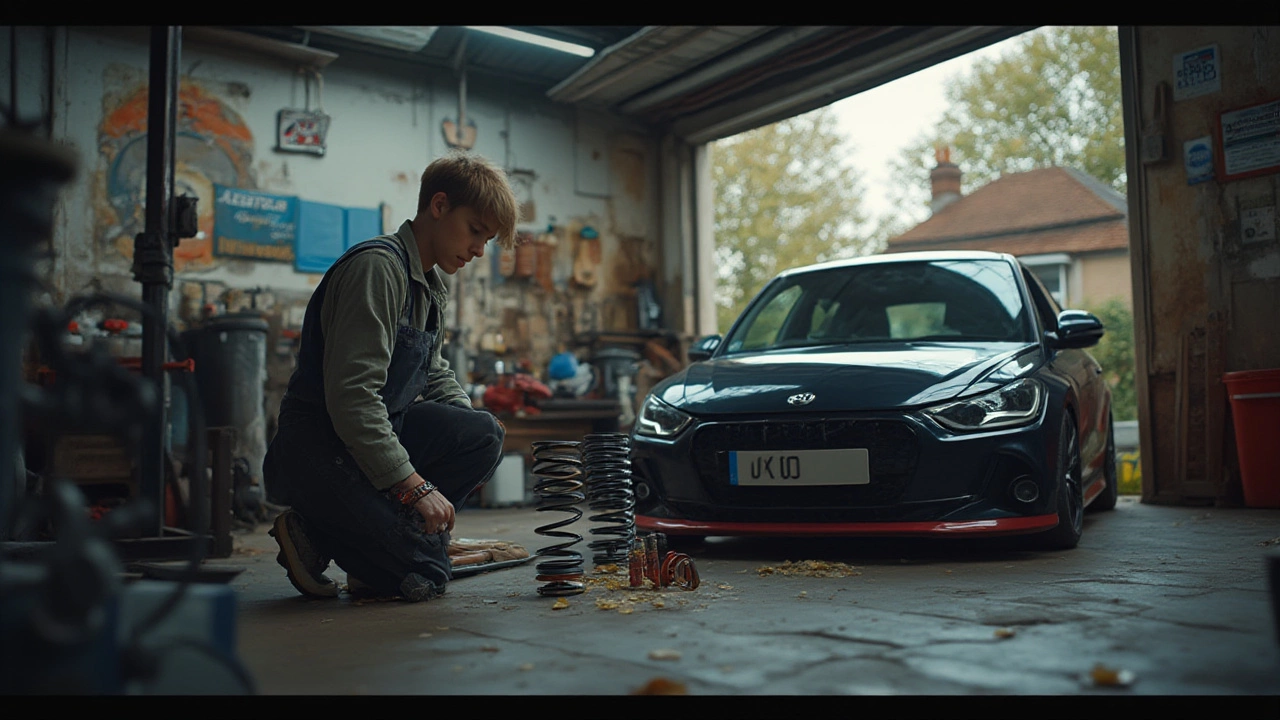If you’ve ever felt your car wobble through a corner or wanted a more aggressive stance, a suspension upgrade is the fastest way to feel a difference. The market is packed with lowering springs, coilovers, sway bars, and more, so it’s easy to get lost. This guide breaks down the most common upgrades, why they matter, and how to choose the best combo for your daily drive or track day.
Lowering springs are the go‑to entry point for most car fans. They replace the stock springs with shorter, stiffer versions, dropping the ride height by 10‑30 mm. The result is a tighter look and a modest improvement in cornering grip because the car’s centre of gravity is lower. However, they’re a one‑size‑fits‑all solution – you can’t fine‑tune the stiffness or rebound on the fly.
Coilovers combine springs and dampers in one unit, letting you dial in both ride height and damping force. That means you can soften the ride for daily commutes and stiffen it up for a track day, all without swapping parts. The trade‑off is cost; high‑quality coilovers can cost two to three times more than a set of springs. For most enthusiasts who want flexibility and are comfortable with a bit of setup work, coilovers win.
Our own post "Coilovers vs Lowering Springs: Best Suspension Drop for Your Car" dives deeper into the numbers if you need a side‑by‑side comparison.
Dropping a car isn’t just about looks. When you lower the ride height, the suspension geometry changes – camber, toe, and roll centre all shift. If you don’t get an alignment after the install, you could end up with uneven tire wear or unpredictable handling. A quick alignment check costs under £50 and saves a lot of headaches.
Daily drivers often ask, "Are lowering springs safe for everyday use?" The short answer: yes, if you stay within modest drop ranges (no more than 20 mm) and keep the suspension tuned for comfort. Going too low can make the ride harsh, increase road noise, and even damage your city‑street suspension components over time.
Legal limits vary by region, but most UK roads allow a maximum drop of 20 mm from stock without needing a V5 update. Check your local regulations before you commit – a fine or failed MOT isn’t worth the cheap look.
Don’t forget the ancillary upgrades that often come with a drop. Stiffer sway bars reduce body roll, while upgraded bushings keep the new geometry stable. Pairing these with a quality set of lowering springs or coilovers delivers a noticeable handling boost without sacrificing everyday comfort.
Ready to start? Here’s a quick checklist:
With the right parts and a bit of planning, your suspension upgrade will make every drive feel more planted and enjoyable. Need more details? Browse our other articles like "Lowering Car Springs: Pros, Cons & Buying Guide" and "Are Lowering Springs Safe for Everyday Cars?" for deeper insights. Happy modding!

Wondering if you can put lowering springs on stock suspension? Unpack real-world results, potential pitfalls, and expert tips for the smoothest ride.